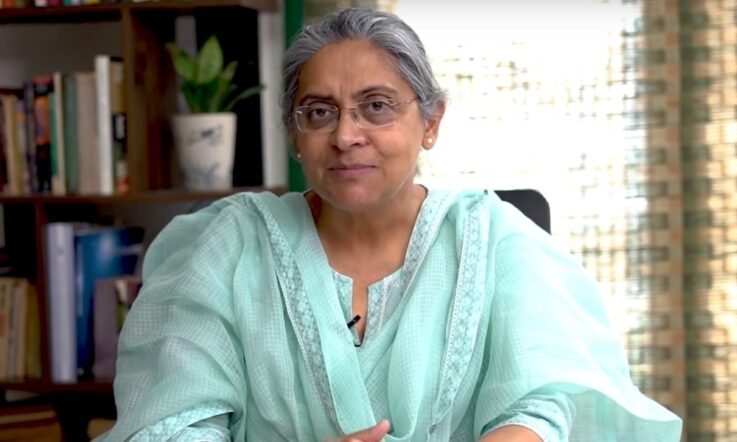How often have we heard the words, ‘I hate maths,' being announced by students? How often have we heard the words, ‘I love maths,' being shouted in classrooms, the school yard, or anywhere else for that matter?
In my more than 30 years of teaching, the words, ‘I love maths' – or similar – have seldom been heard by me or – if I dare generalise – by most teachers. If students of any age do not like a particular activity, the chance that they will happily participate in such an activity even if they are directed or required to do so is very slim indeed.
William Glasser in Control Theory in the Classroom makes it very clear that it is an individual's intrinsic motivation and their personal attitude that has the most influence over what the individual will or will not achieve. By examining and reporting on student behaviour and attitudes in relation to their learning outcomes he found that, unless a student was personally motivated to behave and learn, there really was very little anyone else could do except offer support and advice. Inevitably, it was the student who was responsible for their attitude, motivation, behaviour and learning.
So, how do we change the affective condition and the mental mantra of, ‘I hate maths,' to one where there is a genuine academic and social engagement, with the supporting positive mantra of ‘I love maths' being voluntarily and enthusiastically announced by students?
This is a question that has remained with me – until, that is, after many, many years of teaching and an unexpected set of circumstances, I finally heard the words, ‘I love maths,' being cheerfully expressed, not only to me, but to other teachers as well. This positive maths mantra was being expressed on a daily basis, to the point where this mantra took on a life of its own.
It arose as a result of a serendipitous situation when I became a permanent relieving teacher. During this time, in addition to other grades, I was also relieving a number of Prep and Grade 1 teachers. When I went to their classrooms, the teachers asked me to work on improving the numeracy skills, abilities, knowledge and understanding of the children.
In consultation with the teachers, I enquired if they would be happy for me to apply a particular form of numeracy teaching methodology I had in mind. It was based on my years of teaching experiences; my traditional martial art Goju Karate studies, training and teaching; my elite sports karate training; my doctoral research in the areas of cognitive neuroscience and brain plasticity; and also my associated studies in psychology, the sports sciences, guidance and counselling, leadership and management, health counselling and communication studies.
Achievement and excellence is not an accident, it is crafted
It was during these discussions with the teachers that I referred to a variety of ideas and research; one of the many which came to mind was the research of Daniel Coyle, the author of The Talent Code. Coyle, referring to University of California Los Angeles neurologist Dr George Bartzokis, points out that Bartzokis was of the view that, ‘All skills, all language, all music, all movements, are made of living circuits, and all circuits grow according to certain rules.' These certain rules state that if one is to achieve any level of success, in any discipline, such as music, maths or movement, one must be self-disciplined, determined and self-motivated enough to work hard and to continually practice, practice, and then practice even more.
In conjunction with these ideas, I explained to the teachers, I would also be informing the students about what happens in their brain, or their powerhouse, especially when they are thinking and working. This idea was based on the work of Carol Dweck, who reported that when students were given information about the brain, this led to academic and social gains being made by the students. According to Dweck, the reason this was taking place was because the students gained insights into the idea that their thinking and their self-directed behaviour could change and rewire their brain and create new brain maps. This meant the students had power over their thoughts, actions and learning.
Norman Doidge, in The Brain that Changes Itself, referring to a study by Michael Merzenich and colleagues, found that ‘When it came to allocating brain-processing power' the brain allocates neurological resources to those parts of the brain that are the most active. ‘Merzenich's speciality [was] in improving people's ability to [rewire and redesign] the brain by training specific processing areas, called brain maps, so that they do more mental work.'
The hypothesis here is that this increased mental work would provide cognitive, intellectual, academic and social benefits for the individual in question.
Changing the brain map from negative to positive
While changing negative behaviours to positive behaviours is not easy, the important point to note here is that it is possible; and for it to be possible, the individual must make a conscious, deliberate and self-motivated decision to change their thinking and behaviour from negative to positive. This means hard work and effort needs to be applied.
As Doidge points out, changing a particular behaviour requires conscious and effortful thinking, with associated positive actions. This conscious effort and action needs to take place consistently and regularly, and, slowly but surely, the brain is rewired to support what is taking place. Effort and hard work leads to neurons firing and wiring. Neurons that fire together, says Doidge, wire together.
Creating new neurological pathways, through deliberate active thinking and participation, not only has the potential to create a new brain map; it also has the potential to lead to added axonal myelination. Myelin is a white fatty dielectric or electronically insulating type of material that is mainly composed of lipids and lipoproteins that wrap around axons (neurological pathways or nerves). Myelin forms an insulating layer around these axons, the purpose of which is to allow electrical impulses to transmit efficiently and rapidly along the axonal pathways.
The important point to note, according to Coyle, is that, ‘myelin doesn't care about who you are. It only cares about what you do.' Myelin only cares about how the individual practiced, how many times and for how long the individual practiced; nothing else matters!
Added to this, I explained to the teachers that I would be focussing on the concept of self-empowerment. I would be informing the students that their brain was their powerhouse, and that all of their thinking, actions, choices and learning came from their powerhouse, which they owned. ‘I've got the power!' became the classroom mantra; which the children loved saying. Added to this, the children presented positive academic, social and learning behaviours, both inside and outside of the classroom.
The NeuroNumeracy program
To their great credit and insight, the teachers in these classes were happy for me to undertake and present this form of teaching strategy; as long as they could – of course – monitor what was taking place, specifically, to ensure that positive social engagement and academic participation was taking place, and that students' measurable knowledge and numeracy understanding was advancing.
All of this was readily agreed to; and so the NeuroNumeracy program began. It focused on the four operations: addition, subtraction, multiplication and division. I applied my particular numeracy teaching methodology in all of the Prep and Grade 1 classes I attended.
The children were placed in groups of four, five or six. Each group was provided with Lego blocks to collect, lock and count. The numerical algorithm was written on the whiteboard. The numerical problem was then demonstrated using the Lego blocks with accompanying verbal descriptions to the class. For example: 5 + 4 = ? The students then followed with the use of the Lego blocks to calculate the answer.
If any student finished prior to anyone else, they were encouraged and supported to assist others. This process led to peer group teaching and scaffolding taking place. Once all students had completed the task, the solution to the problem was then confirmed to the class: 5 + 4 = 9. The next algorithm was then presented, this followed the same formula. The program consisted of 40 to 45 minutes of teaching, once a week, for a term of 10 weeks in each classroom.
A neurologically wired and fired epiphany: ‘I know the answer!'
As time progressed most of the students progressed from individual sequential counting as they worked towards arriving at the correct answer to the point where some students began to call out the correct answer, which was encouraged and supported by me and the other teachers, without any sequential counting taking place. These students ‘simply knew the answer' to the numerical algorithm that was written on the whiteboard and also vocally announced and described it to the students. When I asked how they knew the answer to a numerical problem like 6 + 9 = ? they provided me with the best answer possible: ‘I don't know; I just know the answer is 15.'
What this suggested to me, especially if I focus on the neuroscience of brain plasticity, is that the students were rewiring their brain. And the students who were calling out the correct answers had rewired their brain to such an extent that they had created a much more complex brain, with associated brain map advancements, that provided the neurobiological means for more complex neurological firings to take place, which then provided the means for advanced cognition and intellectual insights to transpire.
Declarative, procedural and pedagogical knowledge
All of this advanced neurological firing, and the associated brain map advancements, further develops what is referred to as the mind. This now more advanced mind is what provided the students with the sentient insights into their knowledge and understanding of numbers and numeracy calculations in the areas of declarative and procedural knowledge. I love maths was the affective outcome.
Declarative knowledge, as Anita Woolfolk defines it, is, ‘knowing that something is the case,' while procedural knowledge is, ‘knowing how to do something,' such as, in this case, add, subtract, multiply, or divide.
And then there is pedagogical knowledge. How we go about teaching depends on our pedagogical knowledge as teachers – what we know about teaching. The first principle, as Glasser points out, is that, ‘Teaching is a hard job when students make an effort to learn. When they make no effort, it is an impossible one.'
References
Coyle, D. (2009). The Talent Code: Greatness isn't born, it's grown. New York: Bantam.
Doidge, N. (2010). The Brain That Changes Itself. Melbourne: Scribe.
Dweck, C.S. (2007). Mindset: The new psychology of success. New York: Ballantine.
Cimpian, A., Arce, H.M.C., Markman, E.M. & Dweck, C.S. (2007). Subtle linguistic clues affect children's motivation. Psychological Science. 18: 314-316.
Famechon, J. & Quill, F. (1997). The Method. Melbourne: Data Marketing.
Glasser, W. (1986). Control theory in the Classroom. New York: Harper & Row.
Merzenich, M.M., Kaas, J.H., Wall, J., Nelson, R.J., Sur, M. & Felleman, D. (1983). Topographic reorganization of somatosensory cortical areas 3b and 1 in adult monkeys following restricted deafferentation. Neuroscience. 8(1): 33-35.
Woolfolk, A.E. (1998). Educational Psychology. Scarborough, Ontario: Allyn and Bacon.
The author says that ‘while changing negative behaviours to positive behaviours is not easy, the important point to note here is that it is possible; and for it to be possible, the individual must make a conscious, deliberate and self-motivated decision to change their thinking and behaviour from negative to positive’. In what ways do you encourage students to approach tasks with a positive mindset?
Think about your own maths teaching. Do you provide opportunities for positive social engagement and academic participation? At the same time, how do you monitor that students’ knowledge and numeracy understanding is advancing?



